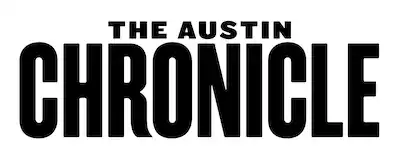https://www.austinchronicle.com/arts/2002-04-12/85521/
Exhibitionism
Local Arts Reviews
Reviewed by Rob Curran, April 12, 2002, Arts
Blade to the Heat: Playing With Fire
Center for Mexican American Culture,through April 20
Running Time: 1 hr, 40 min
In some ways, the Center for Mexican American Culture is the ideal venue for Oliver Mayer's glove love drama: The amphitheatre seating in the "wonderful warehouse" passes for the boxing arena where half the action takes place, the expansive concrete stage passes for the boxing gym, where most of the other half happens.
Set in the 1950s, in a city like Los Angeles, the play deals with three Latinos and one Latina fighting each other and the macho stereotype of their culture. An anglicized Chicano, Pedro Quinn (Sergio Moreno) scores a surprise points-win over Cuban-American Mantequilla Decima (Raul Castillo) to take the World Championship belt. His machismo shaken, Decima rushes back to the ring to prove himself against another contender, Wilfred Vinal (Gavino Barrera). Vinal understands the teatro of boxing, knowing that a provocative word may be as effective as a razor blade slipped into a glove. Against Decima, Vinal produces the blade of Quinn's homosexuality (how could Decima lose to a "faggot," as Vinal calls Quinn), which almost wins him the fight and draws the heat of the media machine. Vinal's aspersion puts Quinn's relationship with an intimate male friend, Garnet (Maurice Moore), under extreme pressure. Vinal's tactic also drags Decima's relationship with his girlfriend Sarita (Marita De La Torre) into the ring.
The Nushank Theater Collective produces a cast of powerful performers from its camp. Barrera pinpoints the rasp of a street psychologist, with dirty jabs like "Decima thinks everyone cares where he sticks his two-incher." Castillo flexes his muscles and sets his jaw exactly like the kind of guy who nobody calls a girl. In one of the best comic rounds, Castillo deadpans a Decima speech to the press in which he ties his own masculinity as a Cuban-American to the Stars and Stripes and accuses Fidel Castro of being a druggy, gay, effeminate Communist. Maurice Moore and Sergio Moreno do well to treat their characters' relationship with some of the subtle footwork missing elsewhere. As old warriors unable to give up the fight, Don Stewart and Rick Ochoa weave memorably. De La Torre, convincing as the daughter of a prizefighter falling in love with a prizefighter, arguably packs the most punch. Director Chris Thompson gives De La Torre the sensibilities (and costumes) of a toreador, attracted by violent bulls.
Santos Belmarez choreographs the boxing sequences with loving care. The fighters throw too many sugar punches not to connect with a few sweet ones. For the fight fan, the most fascinating element of Blade to the Heat, apart from these slug outs, may be the exploration of teatro in the sport. Did Lennox Lewis get the upper hand on Rashman in the ring or in the press conference? Can Tyson differentiate between the theatrics and the physical fight?
At times heavy-handed, Mayer's script allows the actors to attack big questions while retaining street dialogue and bilingualism. In some ways, the Center for Mexican American Culture is too safe a place to play with the blades of these stereotypes. I would like to see this production in a casino or a sports bar, closer to the heat that inspired it.
Copyright © 2025 Austin Chronicle Corporation. All rights reserved.
